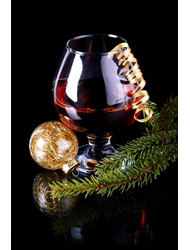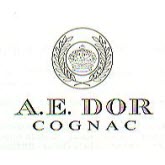Category: Famous Cognac Houses
The Australian Connection with Prunier
During the years after the gold rush in the 1850s, brandy became the most popular spirit in Australia. French companies were quick to seize the opportunity and in 1870 Prunier opened a branch there. A loyal following for the brand was built by their salesman, Émigré Ambroise Lamande. He lived in Melbourne with his pet kangaroo and it is this marsupial that is thought to have been the inspiration behind Maresté’s poster and 1929 advertising film. Reputed to be the first cinema advertisement for cognac ever made, it featured a cartoon kangaroo discovering cases of cognac washed up on a… Read more
Why is the French ‘Paradis’ so special?
Not every cognac house has a Paradis – a designated area in the innermost recess of their cellar – but those that exist are steeped in history. Back in the early eighties, having discovered a cognac which I really liked, I went to the Charente to try and discover its origin. I ended up in Cognac’s twin town, Jarnac, standing in front of an elegant wrought iron gate with an imposing key. Behind it were about 100 very dusty bonbonnes, each with a chalk board describing what was in them. What an eye opener – they contained cognacs which dated… Read more
The Charente Scene – Bisquit Sold
Alexandre Bisquit established his famous cognac trading house in Jarnac in 1819. When his daughter married Adrien Dubouché in 1848, his son-in-law’s name was added to the firm. It remained in family hands until the mid-60s when it was sold to Paul Ricard. Latterly it was owned by Distell but earlier this year it was sold again, to the Campari group, for over 50 million Euros. In many ways the purchase of Bisquit Dubouché by M. Ricard was the start of the firm’s real growth. Not only did he buy the biggest chateau in the region, with more than 200… Read more
Cognac House Hine Changes Hands
The famous cognac house of Hine has had a colourful past. After 6 generations of family ownership, the company was sold to the Distillers Company. Later it was bought by Möet Hennessy and then CL World Brands. Probably not the future that British-born founder Thomas Hine had intended. Although Bernard Hine has, since 1963, continued to be involved, the company missed the benefits family ownership brings. Its recent sale to French family firm, EDV SAS, has therefore been welcomed with open arms. Returning to family values with recognition of the longevity of the production process, Hine has been able to… Read more
Martell Aim to Be Different
Previously we reported that Martell had introduced their first non-chill filtered cognac. Since then they have also released an ‘Intense Heat Cask Finish’. Adding a finish to cognac is new territory for the industry as the production process is heavily regulated by the Bureau National Interprofessionnel du Cognac (BNIC). Martell, however, have produced their ‘finish’ within current rules. Their ‘Intense Heat Cask Finish’ refers to the intense burning of the oak barrels used for ageing. The result is a cognac with intensely woody tones. Toasting the oak barrels to varying degrees has always been an accepted part of cognac production so… Read more
Sazerac Buys Domaine Breuil de Segonzac Cognac
Sazerac, one of America’s oldest family owned, privately held distillers, has purchased Domaine Breuil de Segonzac Cognac located in the Grande Champagne region. The property is about 220 acres in size and the purchase includes the cognac distillery, organic vineyards and chateau-style mansion dating from 1870. “Given the roots of our company, we are very excited to add a cognac house to our family, especially one as historic and prestigious as this one,” said Mark Brown, CEO. Sadly, many small cognac houses have been sold to foreign buyers in recent years but usually from Asia. This American investment was inevitable… Read more

David on Technical Topics – The Traditional Christmas Spirit
Brandy has been the traditional spirit of Christmas since the sixteenth century and was immortalised by Dickens in Mrs Cratchit’s Christmas pudding, “blazing in half of half a quarter of ignited brandy”. But it is said that cognac was recognised in 1540 after a Chevalier du Maron took two casks of newly reduced or distilled wine to a local monastery near La Rochelle. The monks tasted one of them and found it to be fiery and tasteless so left the other cask unopened. Many years later they found the unopened cask, the contents of which had matured and were very… Read more

A Great Name Disappears – A.E.Dor is no more.
The firm A E Dor has been sold to the Cognac co-operative, Uni-Cognac, for an undisclosed sum. We understand that Uni-Cognac are keen to move into the Far East market and regard the Jarnac based firm of Dor as a significant name in the industry. The firm had a number of owners including a relative, we believe the brother, of the French President Franҫois Mitterrand before it was bought by Odile and Jacques Riviere. Odile ran the firm and was highly regarded in the industry as a gifted blender. She became one of the five best female blenders in the industry. Sadly… Read more

Rémy takeover rumoured
Share price rises despite poor performance Rémy Cointreau is enjoying a stock market lift after rumours of a takeover bid by Brown-Forman – the makers of Jack Daniel’s and Southern Comfort – raised the group’s share price by 3%. The group has been badly hurt by a Chinese government crackdown on extravagant spending, with sales of the company’s flagship cognac falling 32% in the final quarter of last year, following a 30% drop in sales during the third-quarter. It is reported that the offer was flatly refused and it is difficult to see how a family run business would be prepared to lose… Read more
Big Cognac Houses Struggle in China
Phthalate ruling may change All of the big cognac houses have seen their profits in China fall lately. This is thanks not only to the Chinese government’s restrictions on luxury gifts but also to its refusal to accept cognac containing even minimal levels of phthalates. The latter has become a real problem for the industry as most aged cognacs have passed through phthalate-laden plastic pipes at some point in their lives. The levels allowed in China are currently far more stringent than the rest of the world but according to a member of the BNIC Board, this is set to… Read more
